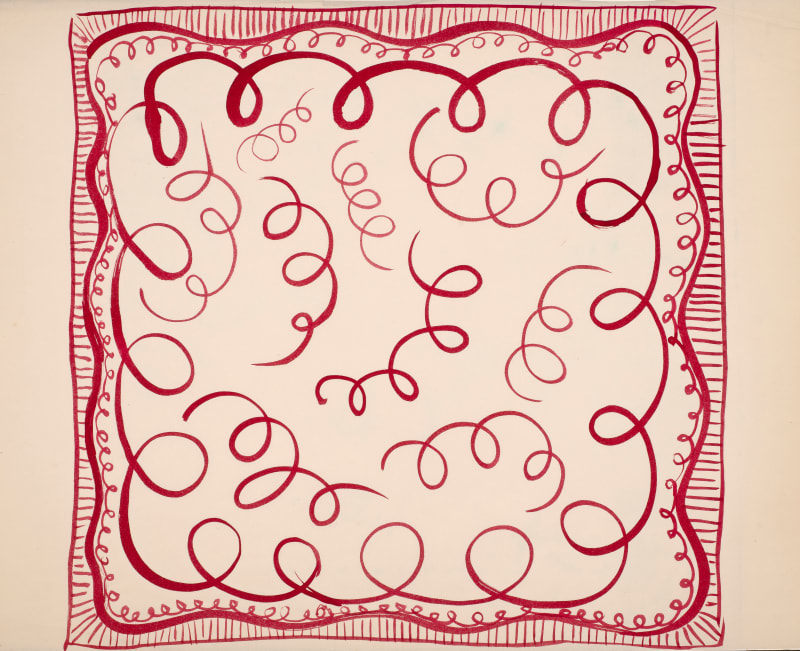Painter and textile designer Lena Pillico (Salomea Lean Pillico Goldmann) was born into a Jewish family in Łódź, Congress Kingdom of Poland, Russian Empire (now Poland) in 1884. She moved to England in 1914 with her husband Leopold Pilichowski (1866-1934), a well-known Polish painter, predominantly of Jewish subjects, who went on to become President of the Ben Uri Art Society (1926-32). She exhibited predominantly as Lena Pillico, but sometimes used Madame Pillico or her married name Lena Pilichowska. Pillico studied at the Slade School of Fine Art in London. Her early work includes a bookplate design to record donors of books to the Jerusalem University Library in 1921 and she participated in the Whitechapel Art Gallery’s survey exhibitions of Jewish Art in 1923 and 1927. She was the first woman artist to exhibit with Ben Uri, arranging an exhibition in 1927 for the Jewish Art & Literary Society Ben Uri in her St John’s Wood studio. She was also one of the first women to exhibit with the progressive Seven and Five Society between 1923 and 1927, including in the 1927 exhibition at the Beaux Arts Gallery in London. She also exhibited extensively with the Women's International Art Club (WIAC) 1915-17 and 1919-25 (non-exhibiting member 1926-27), and served on the executive committee in 1923. Her paintings included landscapes, street scenes and portraits. She was a pioneer in the use of silk screen fabric printing for the creation of decorative silk squares. Her decorative designs included both figurative and abstract motifs.
A contemporary reviewer in the Jewish Chronicle described her designs as ‘decorative’ and ‘in the modern spirit’, while Pilichowski, by comparison, was seen as ‘considerably more academic and [...] well known in Europe for his portraits and Jewish type pictures’. A fabric pattern designed by Pillico for W. Foxton Ltd. is illustrated in Artwork (October-December 1925) and Maurice Fort in Artwork (January-March 1926) described her 'hot-coloured exuberant fantasies', noting that 'her more complicated compositions are not always good, but her simpler work - for example the painting of embracing figures shown in the last exhibition of the Seven and Five Society - shows that she is developing on her own lines, which is certainly more worthy of praise than imitations, however good, of Matisse and Picasso'. In 1928 she was among 16 artists who exhibited work at the Brooklyn Museum exhibition of Paintings, Sculpture and Drawings by American and European Artists, showing 29 paintings (including five designs) to 17 by her husband. After Leopold Pilichowski died in 1934, Lena Pillico remained in London, where in 1936 she had a solo exhibition of 57 recent paintings of Spain and Morocco at Lucy Wertheim's London Gallery. After the Second World War, she moved in 1945 to Oxford, but also retained her London studio at 7 Hill Road in St John's Wood (later a studio for her architect son Amnon Vivien Pilley).
Lena Pillico died in Oxford, England in 1947. Her work was included posthumously in Michael Parkin's touring exhibition on The Seven and Five Society, 1920-35 (1979-80) at Atkinson Art Galleries, Southport; the Minories, Colchester; the National Museum of Wales, Cardiff; and Newlyn Orion Gallery, Penzance. Her work is held in the Ben Uri Collection and Salford Museum & Art Gallery.


